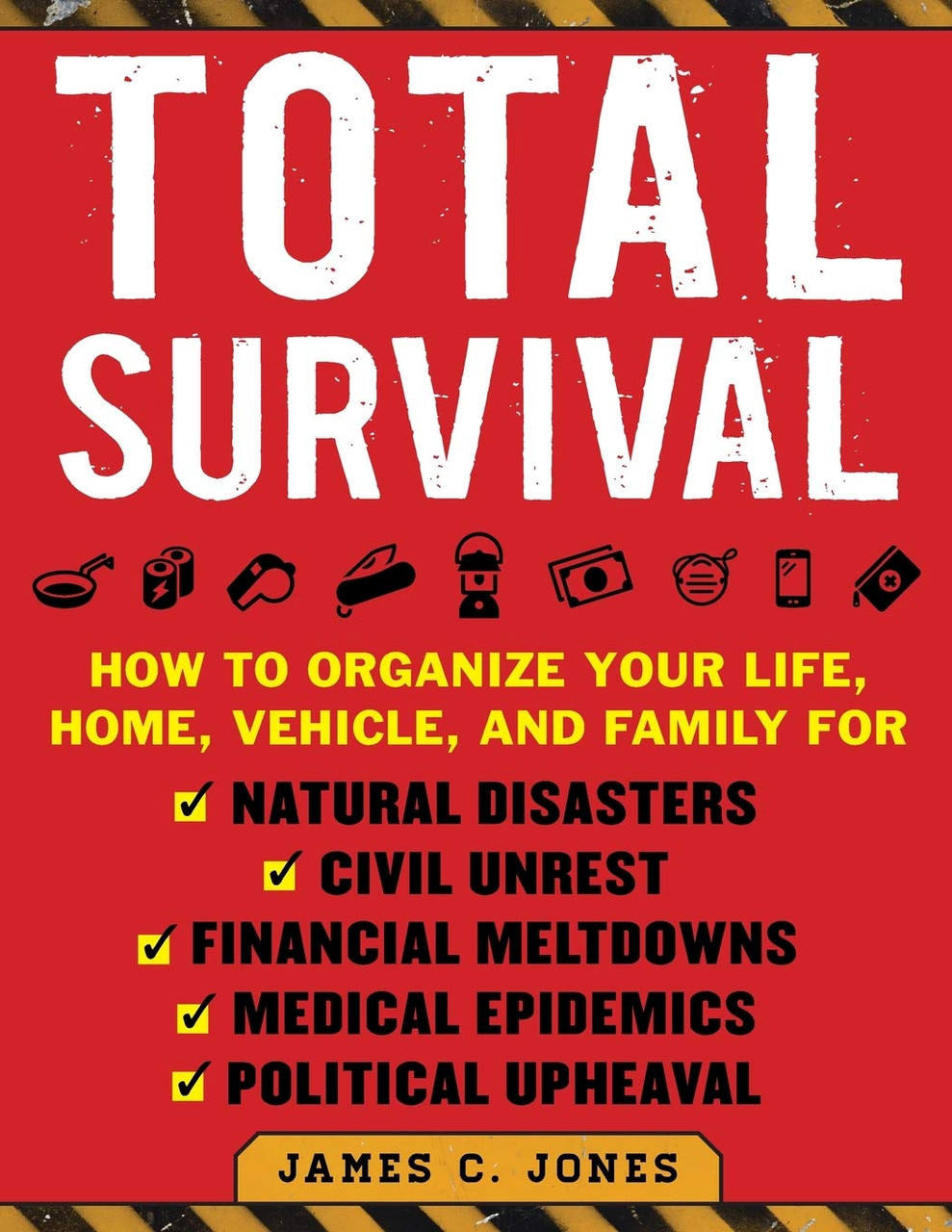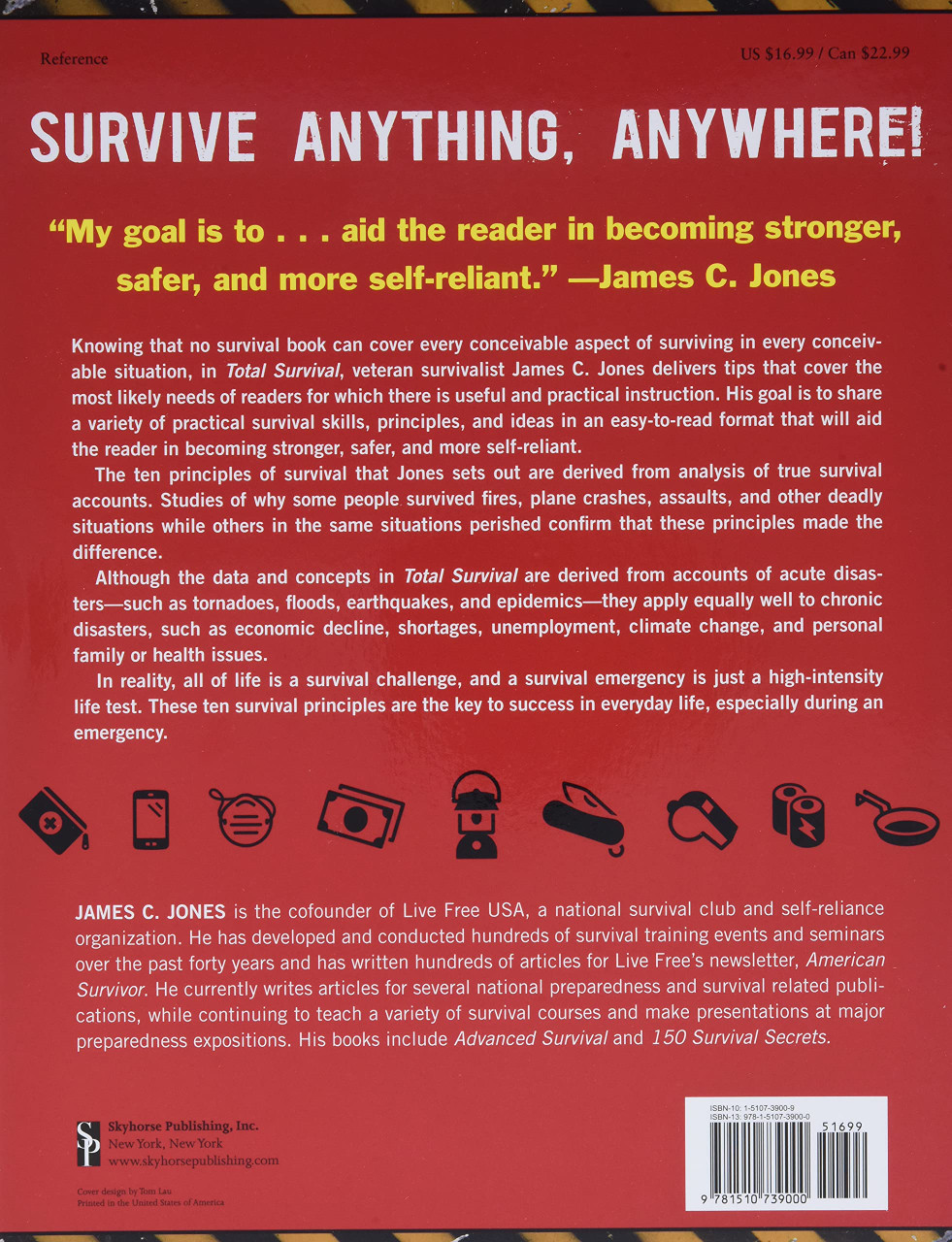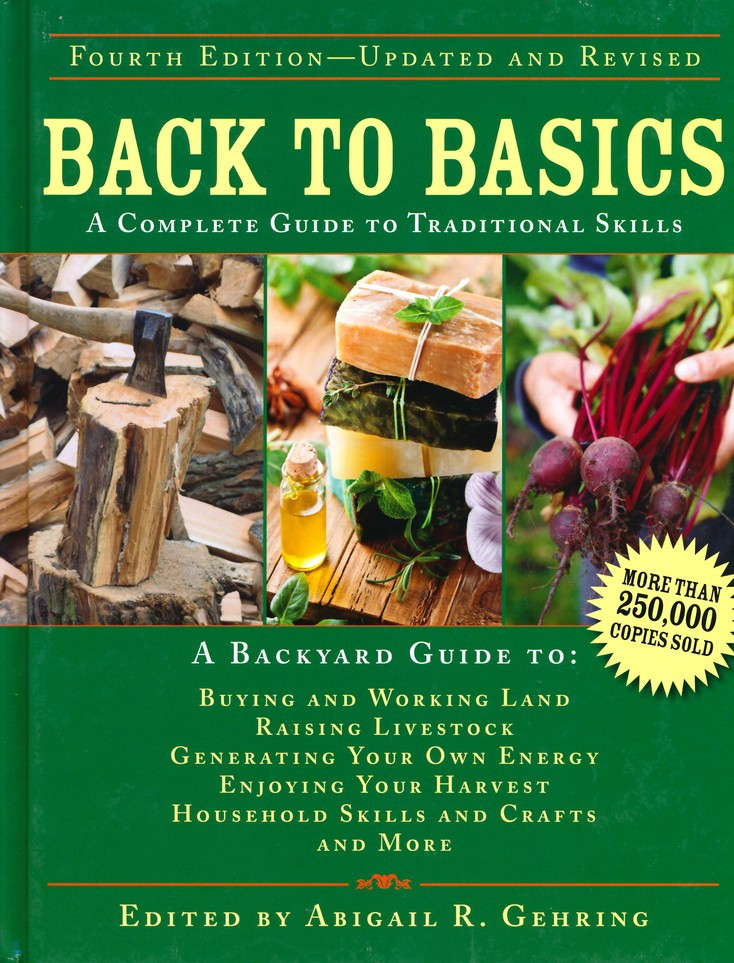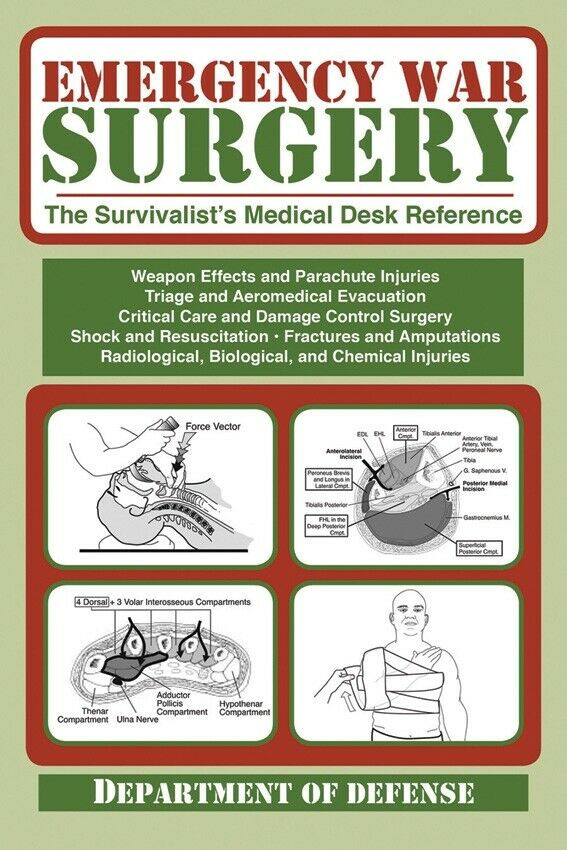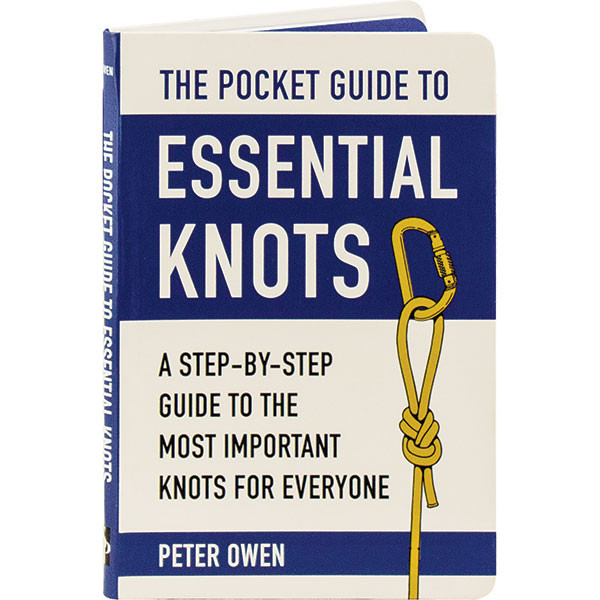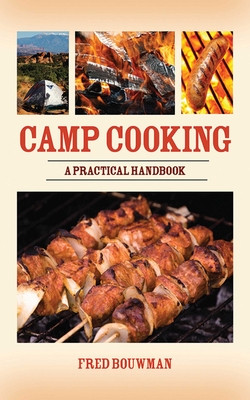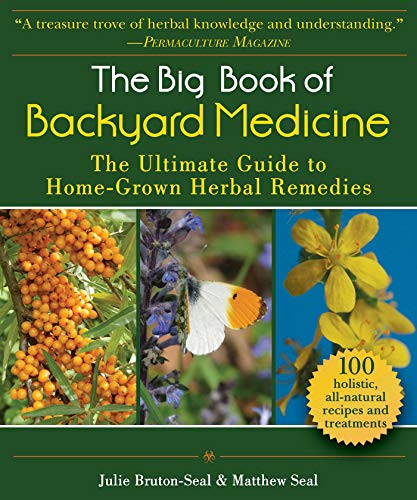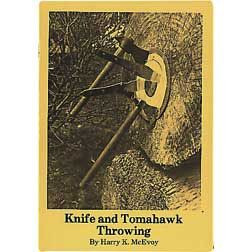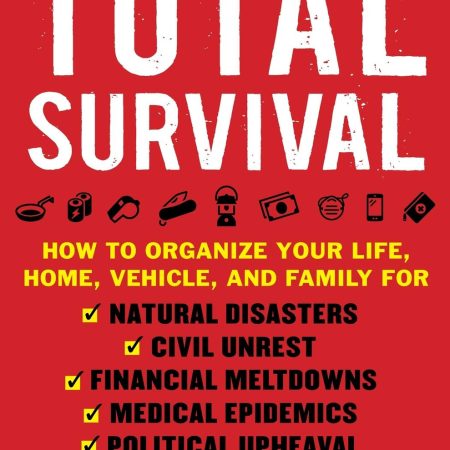| Content | In Total Survival, veteran survivalist James C. Jones delivers tips that cover the most likely needs of readers and for which there is useful and practical instruction. His goal is to share a variety of practical survival skills, principles, and ideas in an easy-to read format that will aid the reader in becoming stronger, safer, and more self-reliant.
The ten principles of survival that Jones sets out are derived from analysis of true survival accounts. Studies of why some people survived fires, plane crashes, assaults, and other deadly situations while others in the same situations perished confirm that these principles made the difference. His table of contents includes:
- 1: Ten Principles of Survival (including Anticipate and Stay Calm)
- 2: Ten Disasters to Prepare For (including Home Fire While Asleep and Home Invasion by Intruder).
- 3: Ten Items for the Prepared Home (including Emergency Plans and Packs)
- 4: Ten Items You Should Always Carry (including a Miniature LED flashlight and a Whistle)
- 5: Ten Things You Should Have in Your Survival Pack(s) (including Water and Weapons)
- 6: Ten Ways to Avoid and Survive Street Crime (including Carjacking and Active Shooter)
- 7: Ten Self-Defense Moves You Should Know (including Front Choke Counter and Handgun Defenses)
- 8: Ten Medical Skills You Should Know (including Cardiac Arrest and Shock)
- 9: Ten Ways to Gather and Purify Water (including Boiling Water and Distillation)
- 10: Ten Ways to Gather and Store Food (including Foraging and Trapping)
- 11: Ten Ways to Start and Maintain a Fire (including Fire by Flit and Steel and Fire by Solar Heat
- 12: Ten Shelters You Should Know How to Build (including Fallout Shelters and Snow Shelters)
- 13: Terrorism
Although the data and concepts in Total Survival are derived from accounts of acute disasters—such as tornadoes, floods, earthquakes, and epidemics—they apply equally well to chronic disasters, such as economic decline, shortages, unemployment, climate change, and personal family or health issues.
In reality, all of life is a survival challenge, and a survival emergency is just a high-intensity life test. These ten survival principles are the key to success in everyday life, especially during an emergency.
| Over 200,000 copies sold—fully updated! Dye your own wool, raise chickens, make your own cheddar cheese, build a log cabin, and much much more.
Anyone who wants to learn basic living skills—the kind employed by our forefathers—and adapt them for a better life in the twenty-first century need look no further than this eminently useful, full-color guide.
Countless readers have turned to Back to Basics for inspiration and instruction, escaping to an era before power saws and fast-food restaurants and rediscovering the pleasures and challenges of a healthier, greener, and more self-sufficient lifestyle.
Now newly updated, the hundreds of projects, step-by-step sequences, photographs, charts, and illustrations in Back to Basics will help you dye your own wool with plant pigments, graft trees, raise chickens, craft a hutch table with hand tools, and make treats such as blueberry peach jam and cheddar cheese. The truly ambitious will find instructions on how to build a log cabin or an adobe brick homestead.
More than just practical advice, this is also a book for dreamers—even if you live in a city apartment, you will find your imagination sparked, and there’s no reason why you can’t, for example, make a loom and weave a rag rug. Complete with tips for old-fashioned fun (square dancing calls, homemade toys, and kayaking tips), this may be the most thorough book on voluntary simplicity available. | This is the illustrated official field manual used by US Army doctors and soldiers in the field. It offers profession, proven advice on dealing with infections, head injuries, fractures, burns, and more. For active-duty soldiers, first-responders, and anyone who might find themselves in a survival situation, it is a remarkable resource.
Military surgeons must assume a leadership role in combat casualty care in circumstances that are far less than ideal. This handbook provides much of the information needed to tackle these issues and features state-of-the-art principles and practices of forward trauma surgery as used by military physicians in far flung locations around the globe. Subjects include:
- Hemorrhage Control
- Shock and Resuscitation
- Vascular Access
- Anesthesia
- Face and Neck Injuries
- Thoracic Injuries
- Wounds and Injuries of the Spinal Column and Cord
- Amputations
- Radiological Injuries
- Biological Warfare Agents
- Chemical Injuries
- And much more!
Featuring nearly 200 illustrations demonstrating proper techniques, Emergency War Surgery is the most trusted and up-to-date manual offered by the Department of Defense for military medical personnel in the field.
| 21 Essential Knots for Everyday Use Indoors or Outdoors! This compact little reference book includes knots for a wide range of functions, from home to work, hobby to play activities. No knot-tying jargon is used, no baffling technical terms--just simple step-by-step instructions and outstandingly clear line drawings. It's the perfectly portable knot reference for anyone--scouts, sailors, hunters, anglers, gardeners, farmers, horse riders, you name it! Among the knots in this book are: Overhand knot, Heaving line knot Reef knot, Sheetbend Fisherman's knot, Figure-of-eight loop, Bowline Three-part crown, Sheepshank Half-hitch, Clove hitch, Constrictor knot, Pile hitch, Highwayman's hitch, Waggoner's hitch, Timber hitch, Double-loop knot, Uni-knot, Blood knot, Square lashing, and more! Start learning these useful and practical knots today.
| Camp Cooking covers it all: from meat, to fish, to vegetables, baked goods and sauces. Fred Bouwman explains it all in easy-to-follow steps. This information has been tested and retested in the field. Much of it is just not available anywhere else and Bouwman lets his expertise run wild here. Chapters include information on building campfires that are serviceable for cooking, selecting the best camp stove, utensils, and how to pack and carry a camp "kitchen." Bouwman also looks at the myths and the facts of safe water purification while camping, and teaches methods for safely purifying your water supply. The book closes with a great section on selecting using the wide selection of foods available to today's camper.
| Anyone who wants to improve his or her health in a completely natural way will find this book to be an absolute must-have for his or her home—and garden.
|
